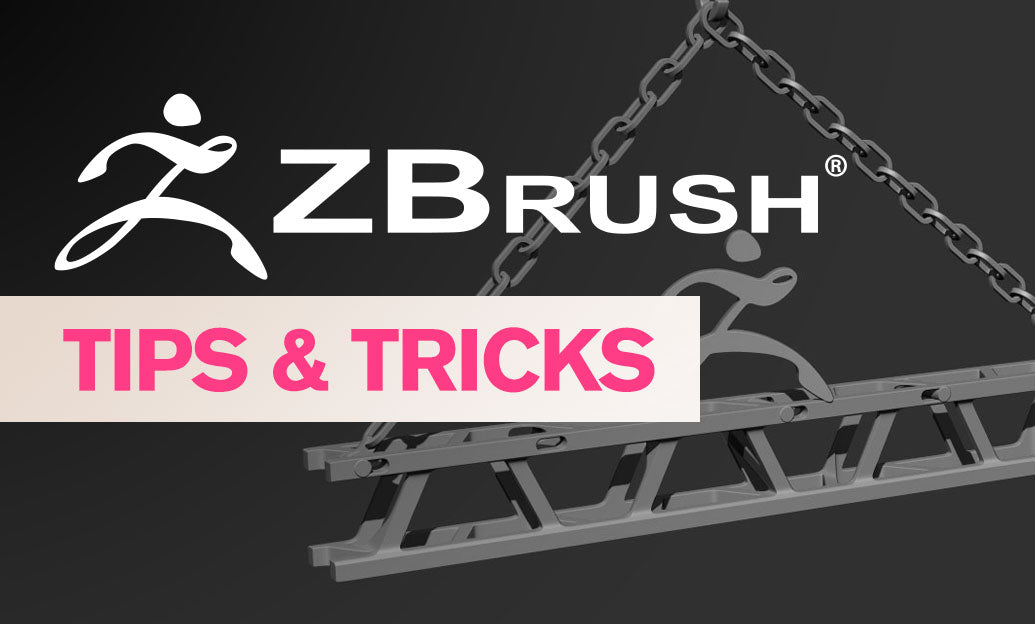Your Cart is Empty
Customer Testimonials
-
"Great customer service. The folks at Novedge were super helpful in navigating a somewhat complicated order including software upgrades and serial numbers in various stages of inactivity. They were friendly and helpful throughout the process.."
Ruben Ruckmark
"Quick & very helpful. We have been using Novedge for years and are very happy with their quick service when we need to make a purchase and excellent support resolving any issues."
Will Woodson
"Scott is the best. He reminds me about subscriptions dates, guides me in the correct direction for updates. He always responds promptly to me. He is literally the reason I continue to work with Novedge and will do so in the future."
Edward Mchugh
"Calvin Lok is “the man”. After my purchase of Sketchup 2021, he called me and provided step-by-step instructions to ease me through difficulties I was having with the setup of my new software."
Mike Borzage
ZBrush Tip: ZBrush Precision Alignment Techniques
October 31, 2025 2 min read

Precision placement speeds up every hard-surface and kitbash workflow. Here’s how to align parts cleanly with ZBrush’s alignment-centric tools and habits.
Gizmo 3D: fast, reliable alignment
- Isolate what you want to align (mask other areas or show only a PolyGroup).
- Press W to activate Gizmo 3D. Use the small Gizmo icons to:
- Center to Unmasked/Visible: instantly sets pivot to the part you’re aligning.
- Align to World: resets orientation to the global axes for square, orthogonal placement.
- Align to View: orients the Gizmo to your current camera for quick planar edits.
- Hold Alt and drag the Gizmo center to reposition and orient the pivot without moving geometry. Release Alt to “bind” the pivot to that spot and normal.
- Constrain with Shift to snap rotations to logical increments for perfect 90°/45° placements.
- Use Transform > S.Pivot to set a temporary local pivot around your selection; use C.Pivot to restore the original.
Planar alignment with Deformations
- For crisp flats, mask the area to preserve, invert the mask, then use Tool > Deformation > Flatten on X/Y/Z to plane the target side cleanly.
- Follow up with HPolish/TrimDynamic to refine planes and transitions without losing alignment.
Aligning multiple SubTools
- Use Gizmo’s multi-SubTool transform to move and orient several parts together (handy for assemblies).
- Make one SubTool the “reference”: mask it, Center to Masked for a reliable pivot, then align the group to World or to View as needed.
- Duplicate before major moves (SubTool > Duplicate) so you can roll back if spacing or orientation needs rethinking.
IMM, NanoMesh, and surface-driven alignment
- For InsertMesh brushes, tune Brush > Orientation so inserts follow surface normals for proper seating on curved shells.
- Use stroke rotation (rotate the Gizmo or adjust roll/rotation modifiers) to standardize fastener directions across a model.
- With NanoMesh, leverage orientation controls (normal/up-axis/rotation variance) to keep arrays aligned and consistent along panels.
Repeatable spacing and distribution
- ArrayMesh for evenly spaced components along linear, radial, or circular patterns—align the base piece first, then duplicate procedurally.
- Use the Floor grid as a visual ruler; align to World and nudge with Move and Offset in Deformation for exact steps.
Quick troubleshooting
- If pivots feel “off,” Clear Masking and re-center the Gizmo to Unmasked/Visible.
- When symmetry skews alignment, enable Local Symmetry or Mirror and Weld after aligning one side.
- For reluctant edges, Flatten first, then Pinch or Crease to “lock” alignment before subdividing.
Solid alignment principles compound: set a dependable pivot, align to a known frame (World or View), then distribute or duplicate. You’ll eliminate drift, keep planes honest, and place components exactly where design intent demands.
Looking to upgrade or expand your ZBrush toolkit? Explore ZBrush licenses, training, and add-ons at NOVEDGE. For broader Maxon options and bundles, visit NOVEDGE—a trusted resource for creative pros.
You can find all the ZBrush products on the NOVEDGE web site at this page.
Also in Design News

Cinema 4D Tip: Noise Shader Best Practices for Procedural Variation
October 31, 2025 2 min read
Read More
Bluebeam Tip: Targeted email distribution from Bluebeam Revu Markups List
October 31, 2025 2 min read
Read MoreSubscribe
Sign up to get the latest on sales, new releases and more …



